The power of our glaciers
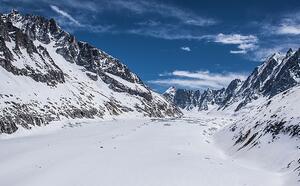
A fascinating underground hydro-electric network
Glaciers have always aroused emotion, whether it be the awestruck wonder of pioneering tourists, the horror and fear of inhabitants during the Little Ice Age, or our consternation as we see them so diminished through global warming.
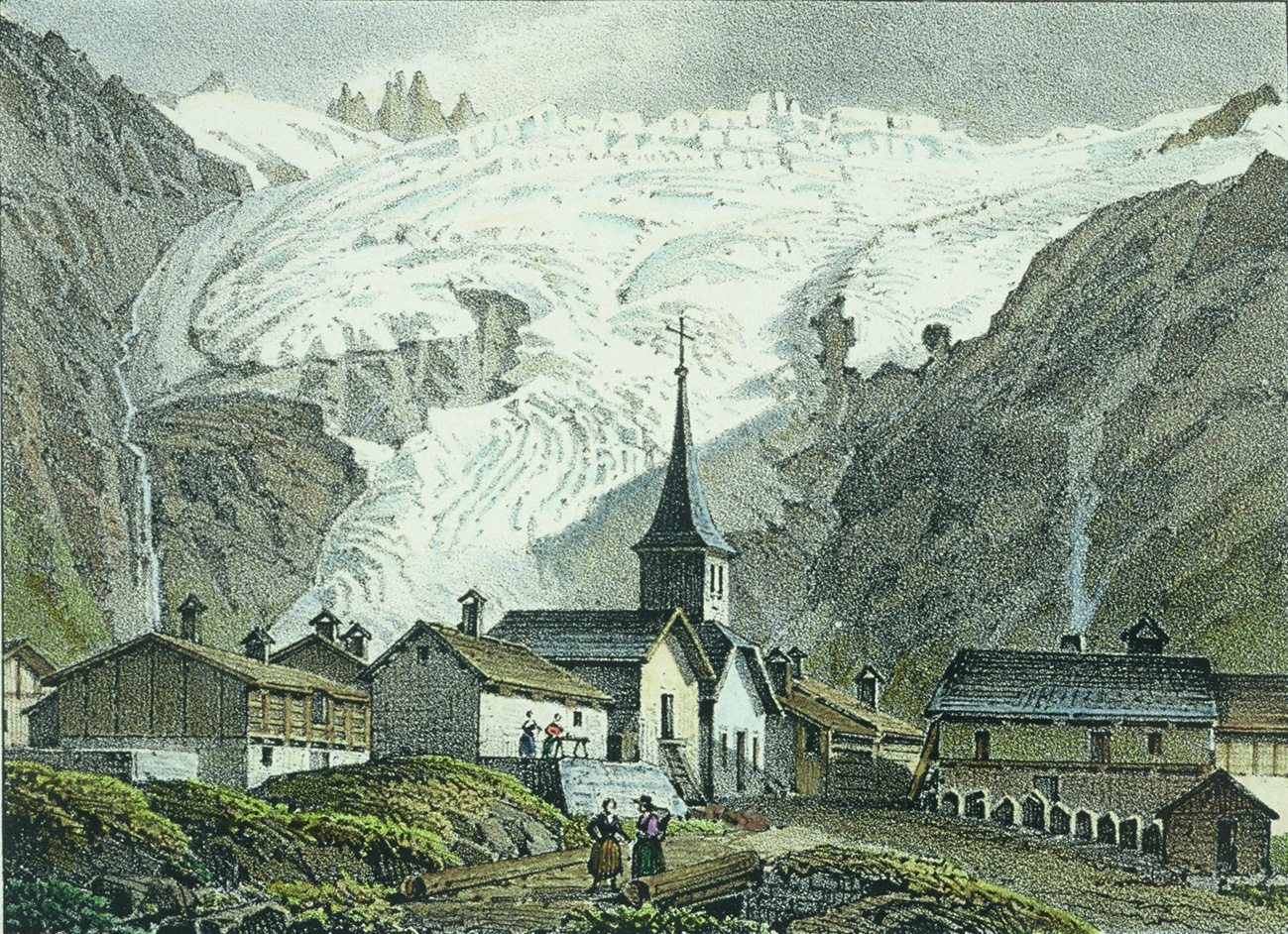
"In the past, people were worried because the glaciers were advancing to the point of destroying their villages. Today we are worried because they are disappearing." Luc Moreau, glaciologist
In the Mont-Blanc massif, the glaciers are an important element of the immense playground which gives pleasure year in year out to hundreds of thousands of skiers and mountaineers. But these glaciers also represent a gigantic water tower! This precious resource, released from the glaciers as the temperatures become more clement in the springtime, takes a circuitous route before flowing into the Rhône!
Emosson SA: clean and renewable energy shared by France and Switzerland
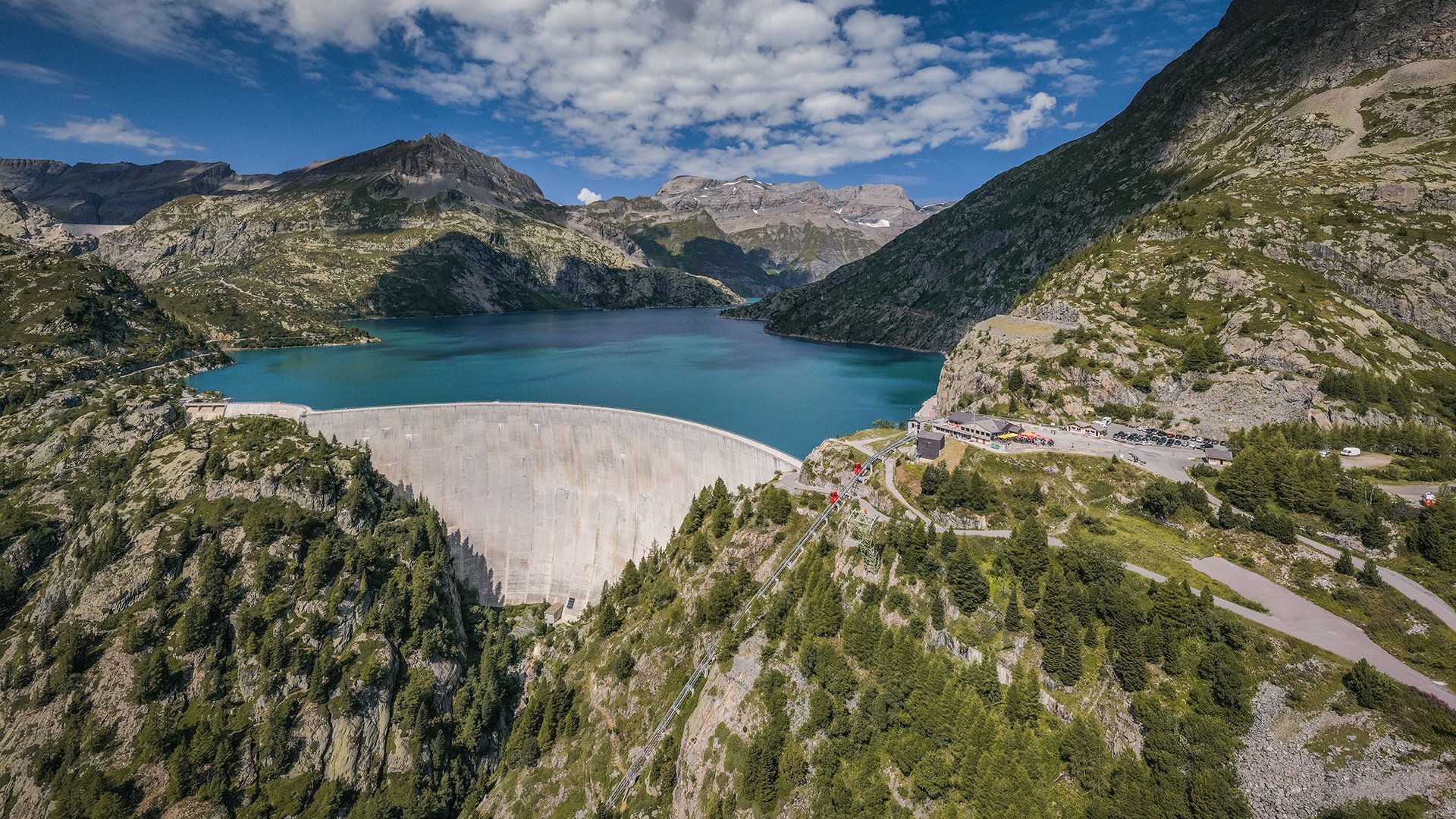
A few kilometres as the crow flies from the Chamonix Valley, at an altitude of 2,000 meters, lies the magnificent Emosson dam. It can be clearly seen from several places in the valley and its majestic site makes a trip there well worth the journey. During the summer months, a zip wire across the dam offers an exhilerating experience and serious rock climbers may attempt the route up the dam face (7A+). Walking possibilities alongside and above the lake are numerous and guided visits of the dam are also possible.
The binational hydroelectric complex of Emosson is the result of a Franco-Swiss cross-border agreement; it was built between 1967 and 1975 at the Col de la Gueulaz, above the village of Finhaut. Emosson is the second largest artificial reservoir in Switzerland with the vertiginous height of 180 meters. It is an arch type dam measuring 554 meters in length and covering an area of 3.27 km2 (maximum depth of 161 meters).
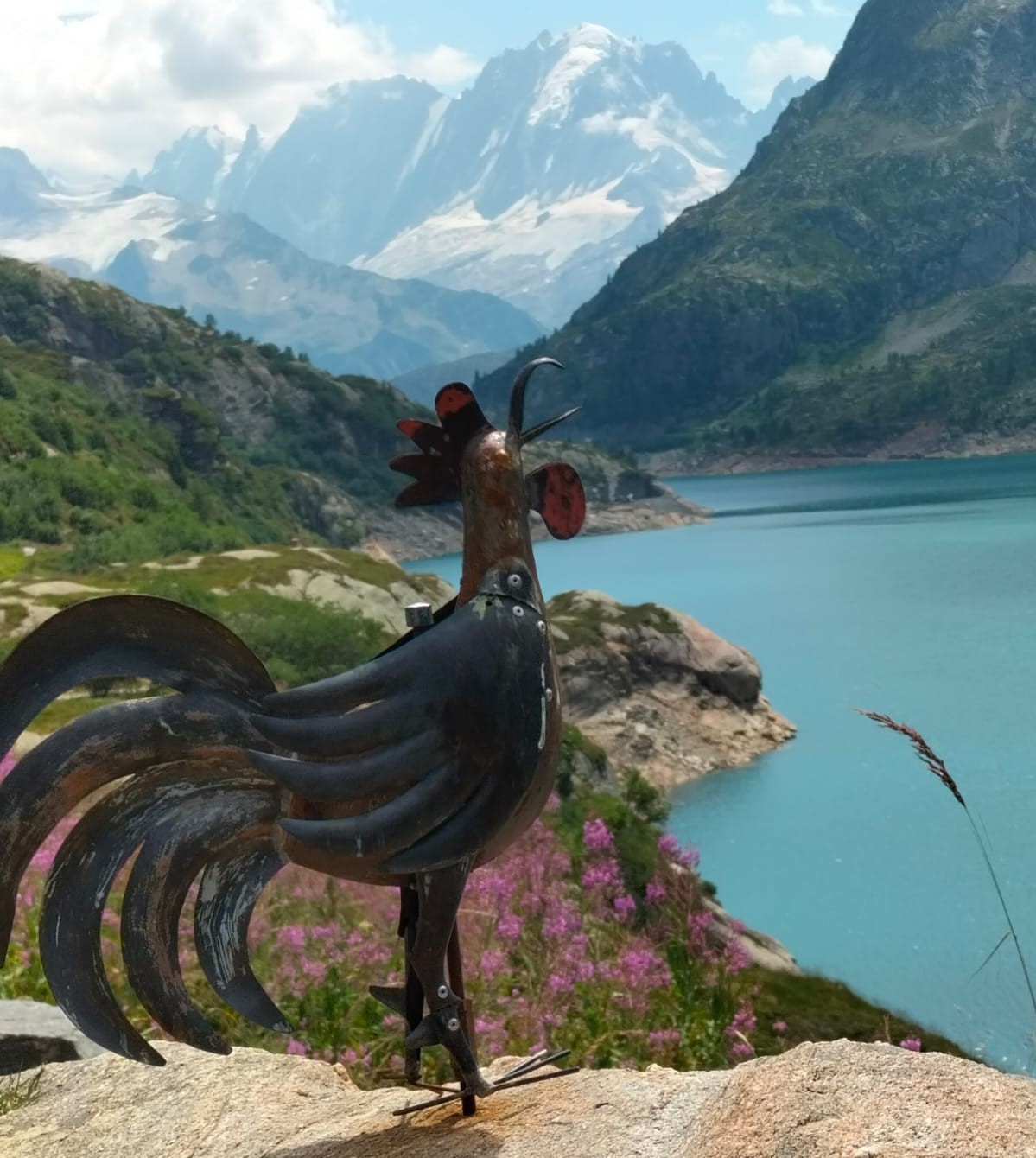
In the turquoise-blue immensity of the lake, the waters of the Mont-Blanc Massif and the Aiguilles Rouges mingle with the Swiss waters of Val Ferret; when the reservoir is full, it contains 225 million m3 of water. It is fed by a vast network of adductions which collects water from an area of 176km2.
The Argentière and Le Tour glaciers are the major energy suppliers to Emosson dam
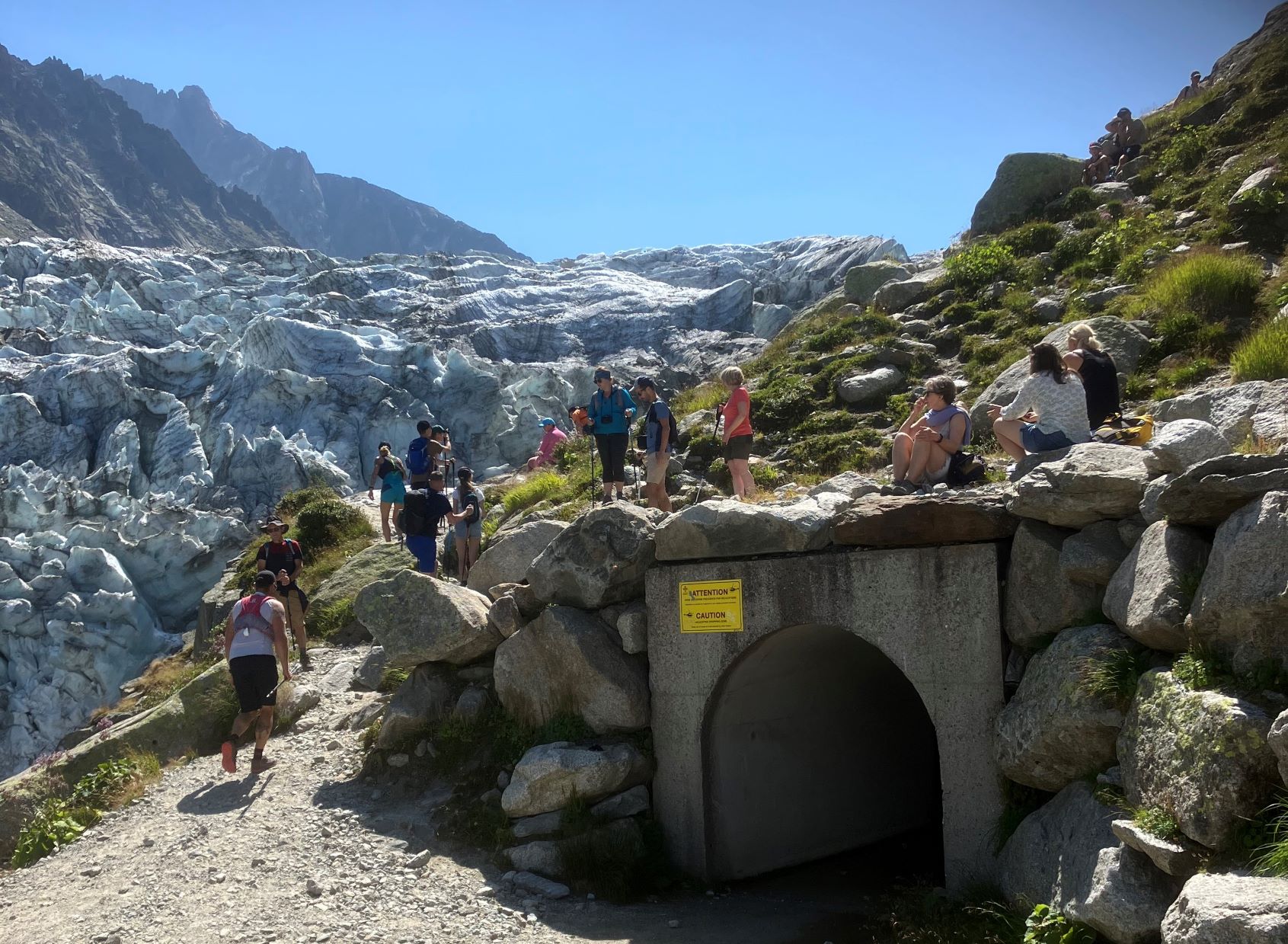
A popular hiking destination from Argentière is the Point de Vue - a magnificent site on the left bank of the Argentière glacier where ice seracs and waterfalls enhance the panorama. One may notice the entrance to a tunnel, but would scarcely imagine that beneath the glacier there is an infrastructure worthy of a James Bond film. On three levels, more than 7 km of wide galleries criss-cross the subglacial terrain. There are countless steps, freight elevators, rest rooms... and bicycles to get around. This impressive underground network is managed by 15 technicians from Emosson SA, hydrology specialists who ensure the proper functioning and safety of the complex.
Built at the same time as the Emosson dam, the development beneath the Argentière glacier is unique. It collects runoff and meltwater from the glacier using around forty wells drilled into the rock at the rock/ice interface. Between May and November, at an altitude of more than 2000m, under 65m of ice, the water is collected, filtered, and then conveyed by gravity along an 8.5 km long gallery to Emosson dam.
Over this same period, from May to November, the waters of the Tour glacier are collected by free-flow into ducts and are channeled to join the Argentière waters in the South collector, before crossing the Trient valley to Emosson.
Every year, these two glaciers supply the dam with 100 million m3 of water.
The Emosson complex is located on 2 territories.
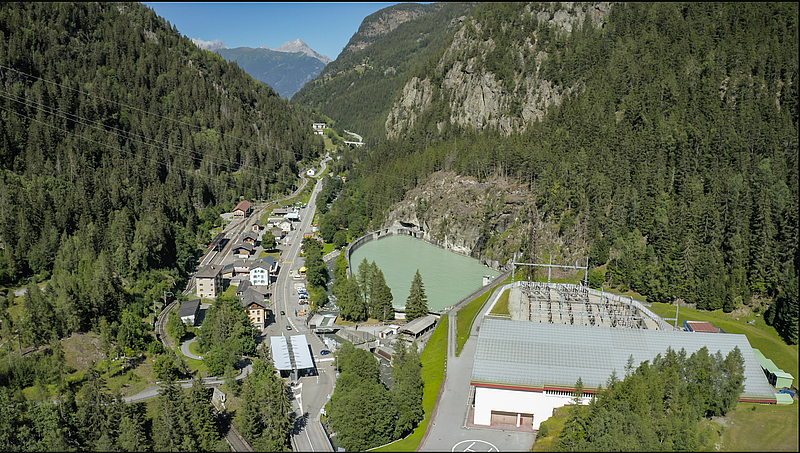
Hydraulic power is exploited in two hydroelectric power stations. The Vallorcine plant (photo) located in the Chamonix valley is the first level. This plant also houses two 80 MW pumps to convey or return water up to Emosson reservoir when demand is less. From Vallorcine, water is turbined to La Bâtiaz plant in Martigny, Switzerland, at an altitude of 470 m.
Some 850 million kWh are injected annually into the very high voltage network. The distribution of energy production is shared 50/50, managed by ALPIQ for Switzerland and by EDF for France.
Argentière glacier - a laboratory for scientific research
We know that glaciers deserve special attention with regards to climatology because they are remarkable indicators of climate change. According to Bruno Boulicaut, director of Emosson SA, the Argentière glacier is the most instrumented and monitored glacier in the world because it is one of the only glaciers that can be studied on the surface and from below.
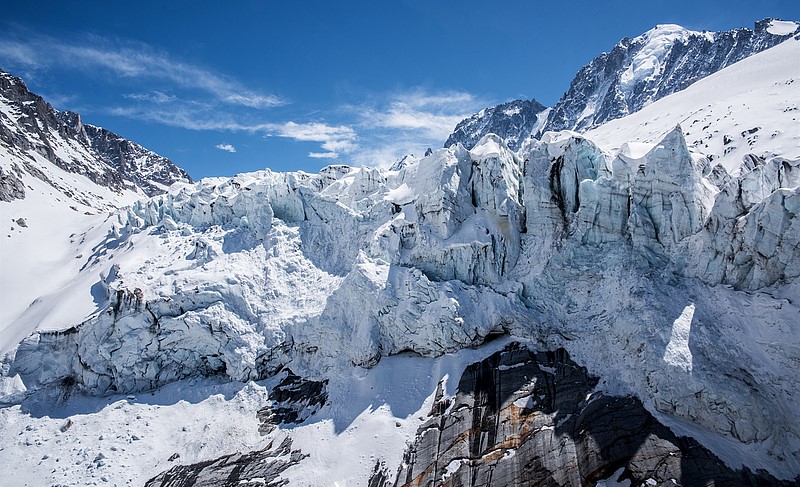
Since 1987, the Chamonix glaciologist Luc Moreau has specialized in subglacial hydrology relating to glaciers in movement. In partnership with Emosson SA and the Institute of Environmental Geosciences (IGE) in Grenoble, Luc has been scrutinizing the dynamics of the Argentière glacier for more than 30 years using a cavitometer (a kind of bicycle wheel installed beneath the glacier which measures on an hourly basis the distance covered by the moving glacier).
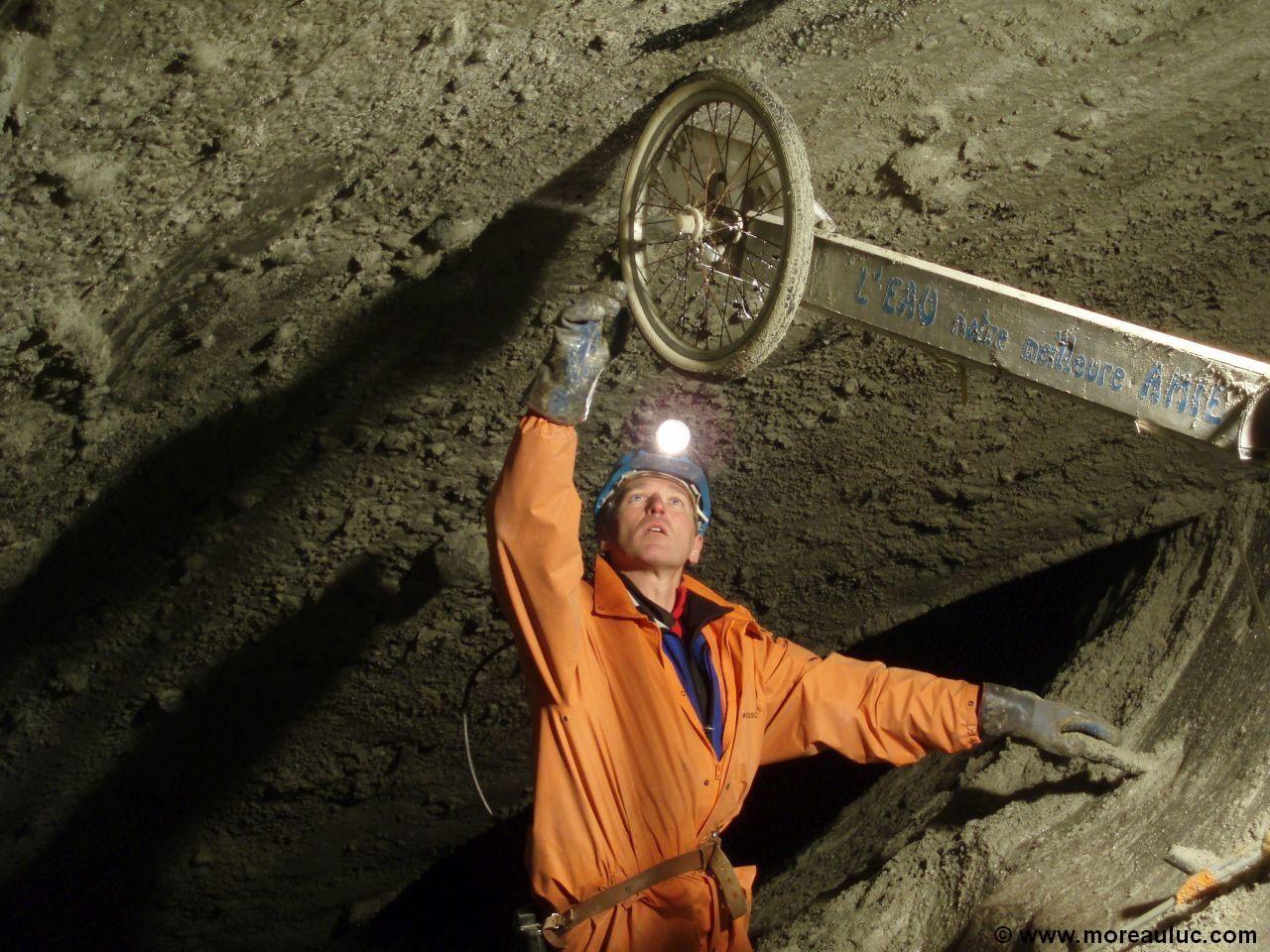
To understand the complex life of this 19 km2 giant, the second largest glacier in France after the Mer de Glace, CNRS researchers apply various measurement methods allowing them to "listen" to the glacier, both on its surface and beneath the ice. The results of this research provide a better understanding of the behavior of ice caps.
The Mer de Glace and the hydro-electric plant at Les Bois
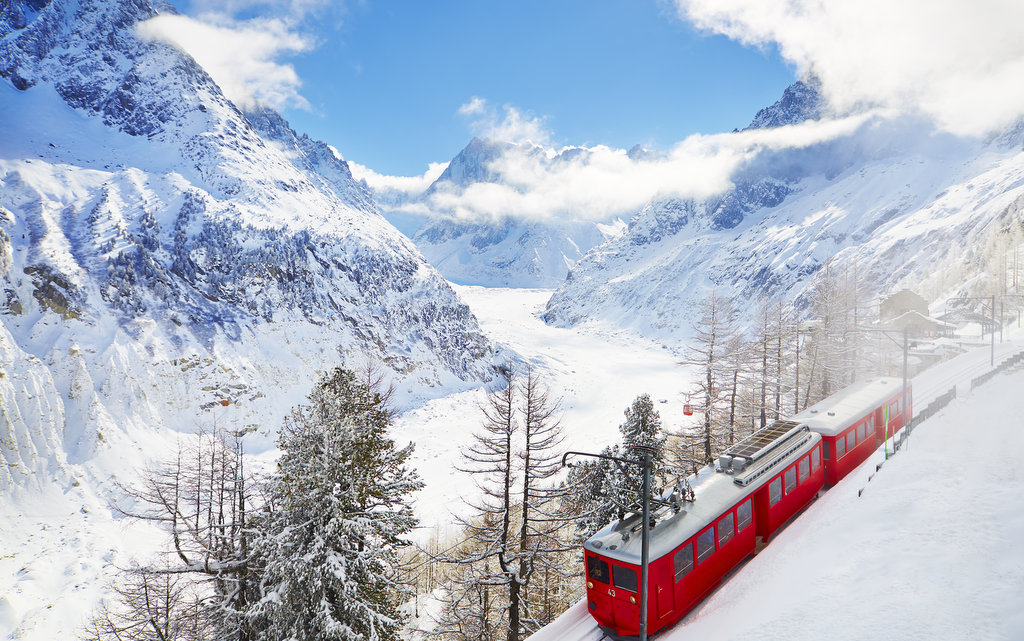
The Mer de Glace is a world famous tourist site, but it's also the iconic Vallée Blanche ski descent, the historic Montenvers cog railway and much more ...
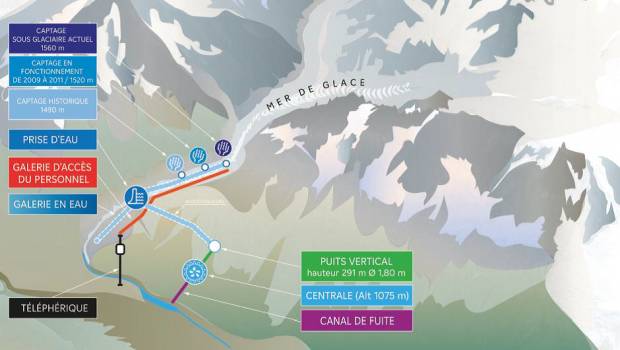
From there, a long dark tunnel plunges into the mountainside for a distance of one kilometre. Halfway along, there is a refuge which could accommodate techniciens for several days if unfavorable weather conditions or an unforseen incident were to prevent them from returning by cable car. The tunnel leads to a very steep staircase of 320 steps, the equivalent of a 25-storey building. For safety reasons there is a lifeline cable. From the top of the staircase, another few hundred metres lead to the subglacial adduction area, located at an altitude of 1560 metres. An artificial grotto, carved out of bluish ice, accommodates the catchment point. A powerful torrent rushes into an armored well before being channeled along a 2 kilometre gallery and down a 291 metre well to finally reach the hydroelectric power station.
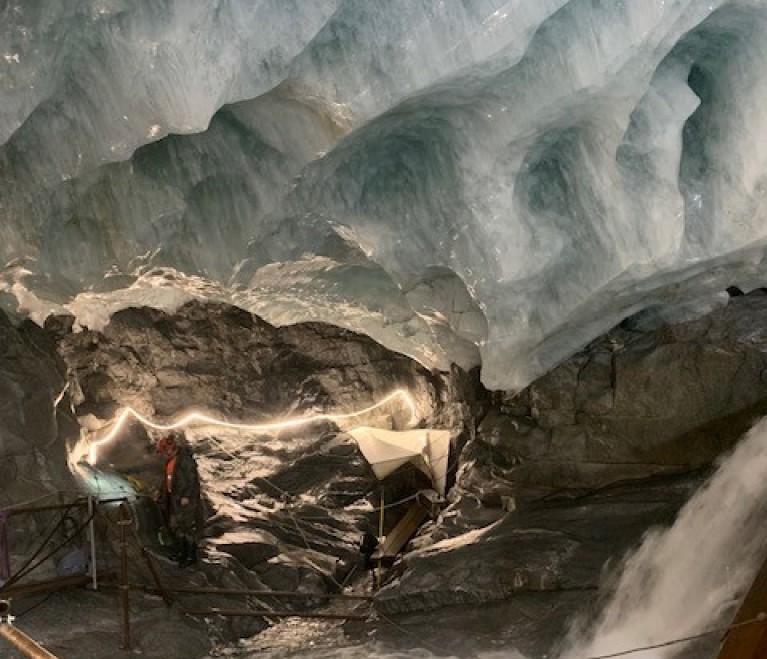
The power station is located in Les Bois, near Chamonix, and it houses a 42 MW Pelton turbine. During peak production, 15 m3 per second of water at 30 bars of pressure hit the turbines. This water, loaded with rock flour generated from glacial erosion, takes its toll on the turbine, which has to be changed every year!
Other hydroelectric power stations in the Chamonix Valley
The municipalities of the Chamonix Valley are totally committed to transition and energy autonomy. In addition to Emosson and Les Bois, several smaller hydroelectric power stations generate power from our mountain torrents.
-Montvauthier: 50 millon kWh
-Taconnaz: 3 million kWh
-Les Nants: 1,9 million kWh
-Servoz: 1,1 million kWh
The most recent power plant project is that of Les Bourgeat which will be in service at the end of 2022. It will produce 3 million kWh. Other projects are on the drawing board.
What about global warming?
A word of warning!
Warning signs along the banks of some waterways alert those venturing into the riverbeds to the risk of sudden rises in water levels. The rivers located downstream of the power plants can present significant dangers at certain times of the day, when large quantities of water are released from the hydraulic installations. This may simply be due to an overflow of meltwater, to a necessity to drain the collector ducts, or to the decantation of rock flour deposits. Whatever the reasons, one must pay heed to the warning signs.
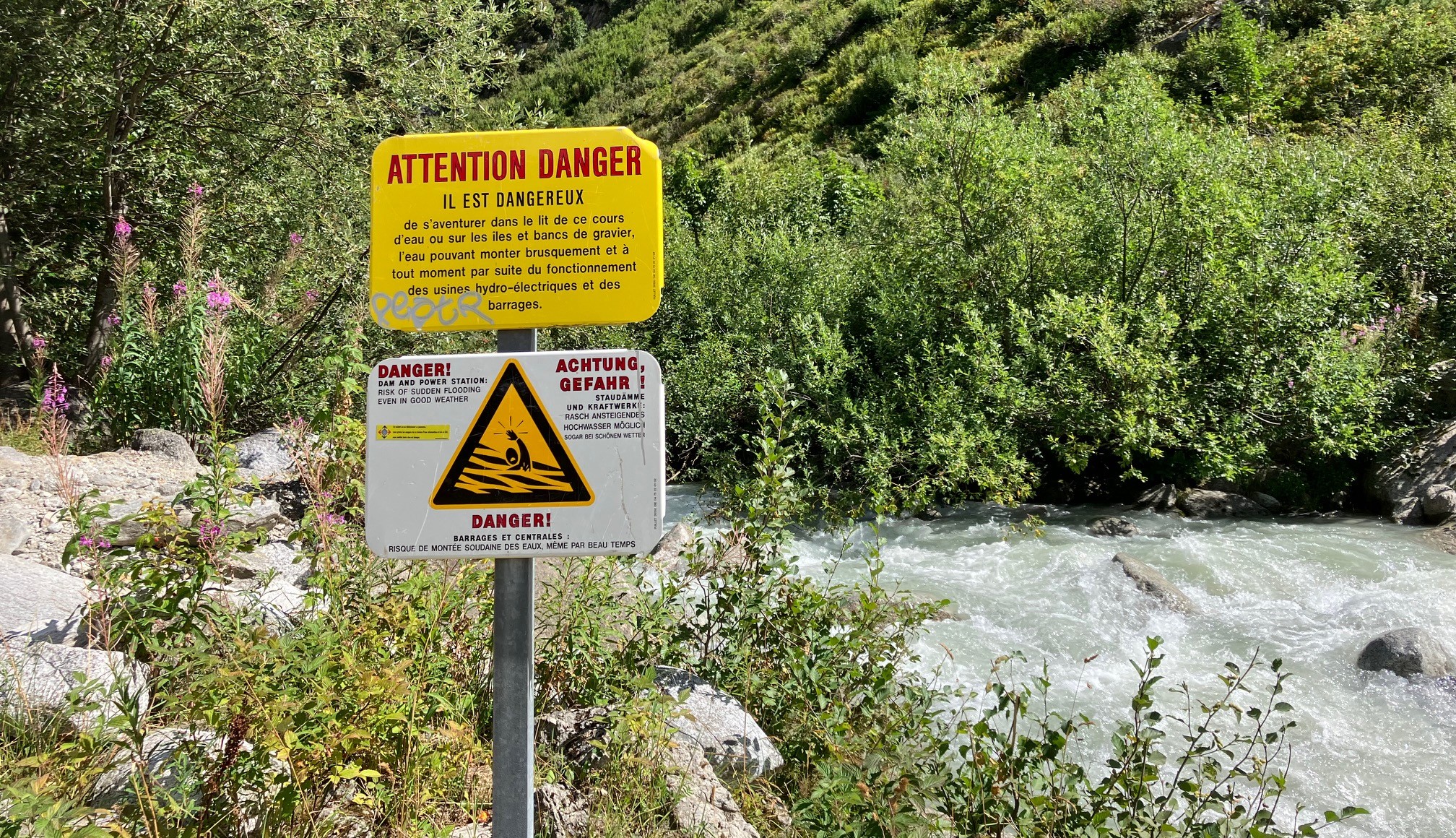
During periods of intense heat, the quantity of meltwater from the glaciers greatly exceeds the capacity of the manmade galleries, hence the overflow that swells our rivers and produces ephemeral waterfalls. The accelerated melting of glaciers (and the associated risks) are expected to continue for a several decades.
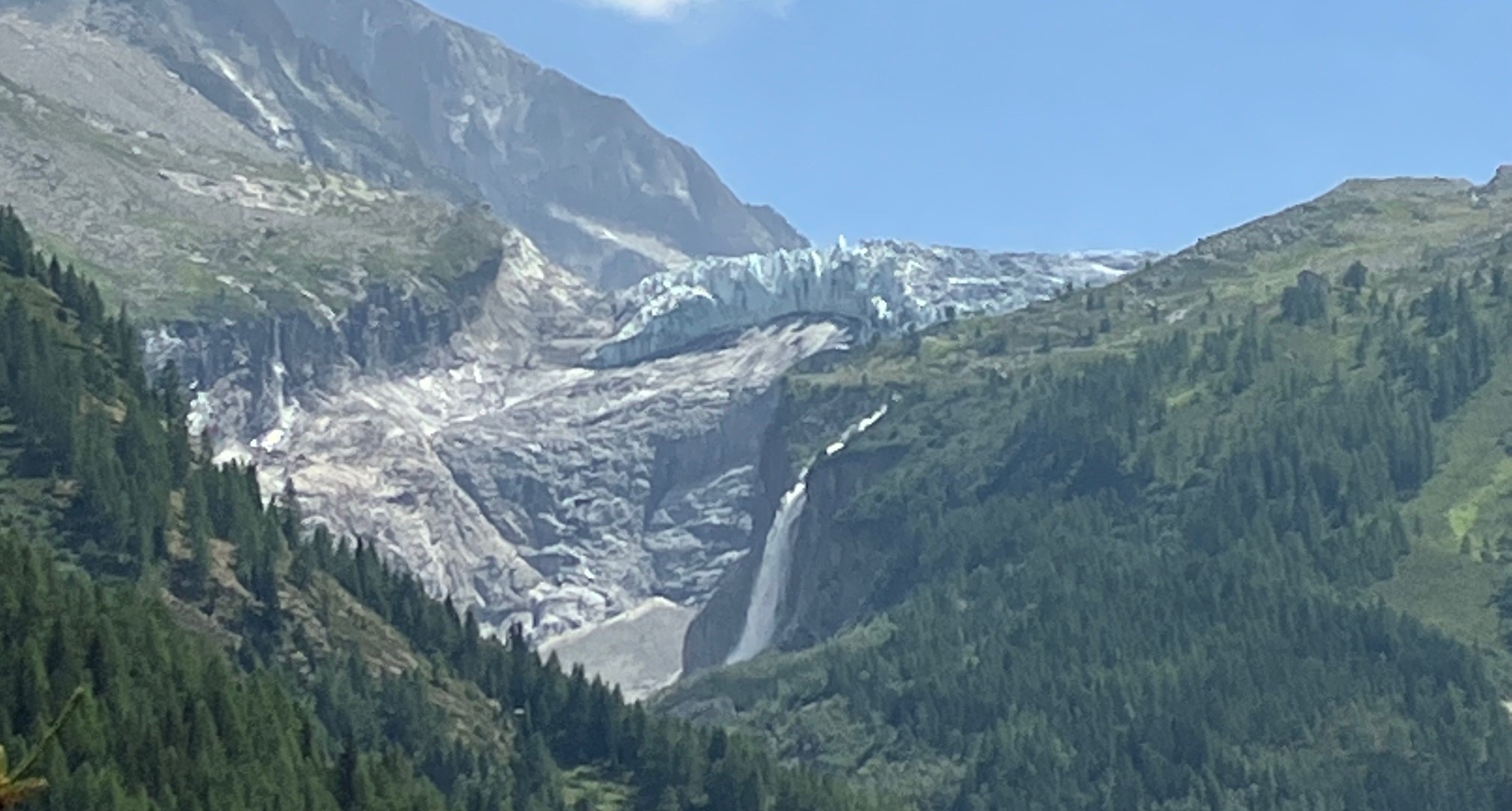
Hydraulic infrastructures must adapt as the glaciers retreat
The glaciers are ineluctably retreating and some sub-glacial catchment points are becoming exposed to the open air, making them vulnerable to the risk of falling rocks that could block the ducts. This is the case for the Mer de Glace complex, which necessitated a 30 million euro investment in 2011. At the current rate of melting, new work will soon have to be anticipated.
Developing water management - a solution for the future
Hydroelectric infrastructures such as Emosson dam make it possible to respond in part to the evolution of water needs linked to climate change: retention of floods, irrigation in the event of drought, management of drinking water, etc. Hydroelectricity is a future-oriented energy, essential to the current energy transition, representing a durable solution in order to move away from carbon energies.
Thanks and credits:
Bruno BOULICAUT, Directeur Electricité d'Emosson SA / Anne-Laure PAYET-FAVRE, coordinatrice administration & qualité
Articles: